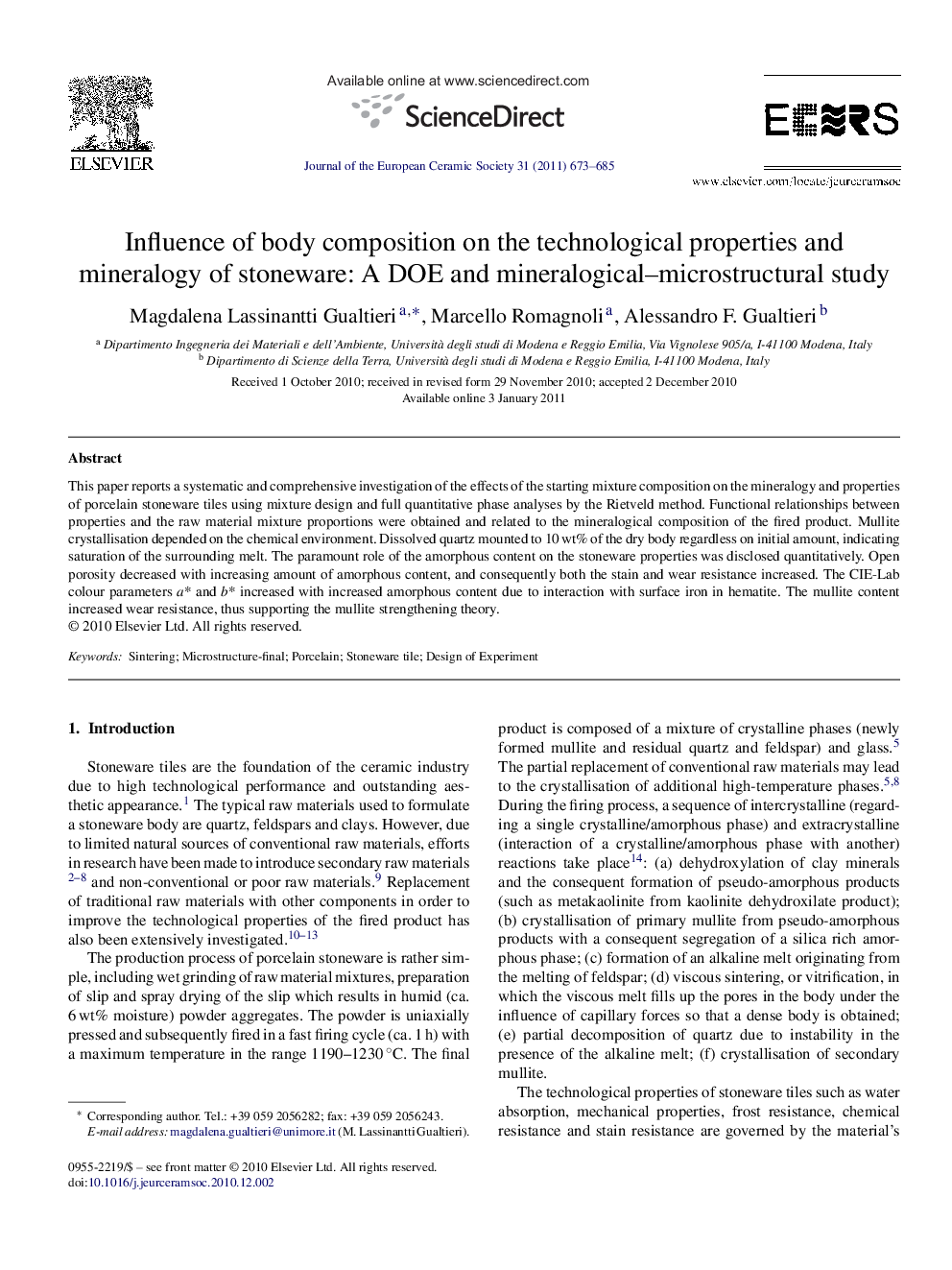| Article ID | Journal | Published Year | Pages | File Type |
|---|---|---|---|---|
| 10629758 | Journal of the European Ceramic Society | 2011 | 13 Pages |
Abstract
This paper reports a systematic and comprehensive investigation of the effects of the starting mixture composition on the mineralogy and properties of porcelain stoneware tiles using mixture design and full quantitative phase analyses by the Rietveld method. Functional relationships between properties and the raw material mixture proportions were obtained and related to the mineralogical composition of the fired product. Mullite crystallisation depended on the chemical environment. Dissolved quartz mounted to 10Â wt% of the dry body regardless on initial amount, indicating saturation of the surrounding melt. The paramount role of the amorphous content on the stoneware properties was disclosed quantitatively. Open porosity decreased with increasing amount of amorphous content, and consequently both the stain and wear resistance increased. The CIE-Lab colour parameters a* and b* increased with increased amorphous content due to interaction with surface iron in hematite. The mullite content increased wear resistance, thus supporting the mullite strengthening theory.
Related Topics
Physical Sciences and Engineering
Materials Science
Ceramics and Composites
Authors
Magdalena Lassinantti Gualtieri, Marcello Romagnoli, Alessandro F. Gualtieri,
